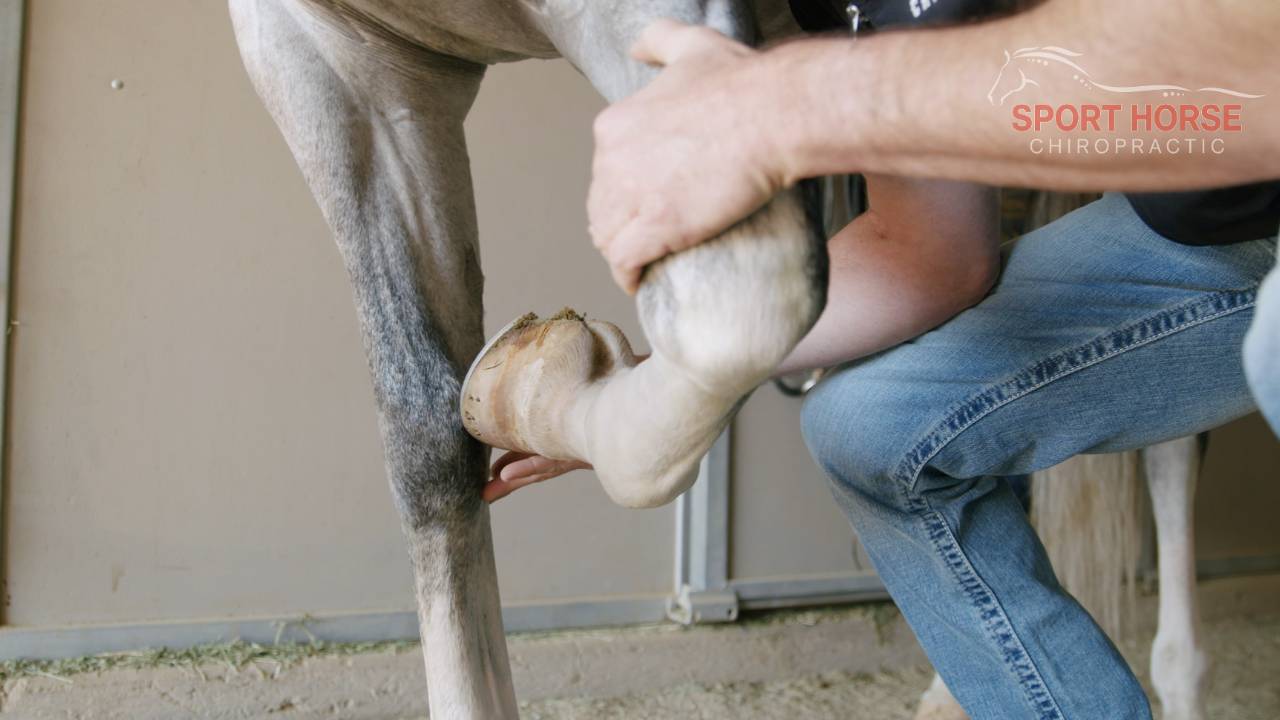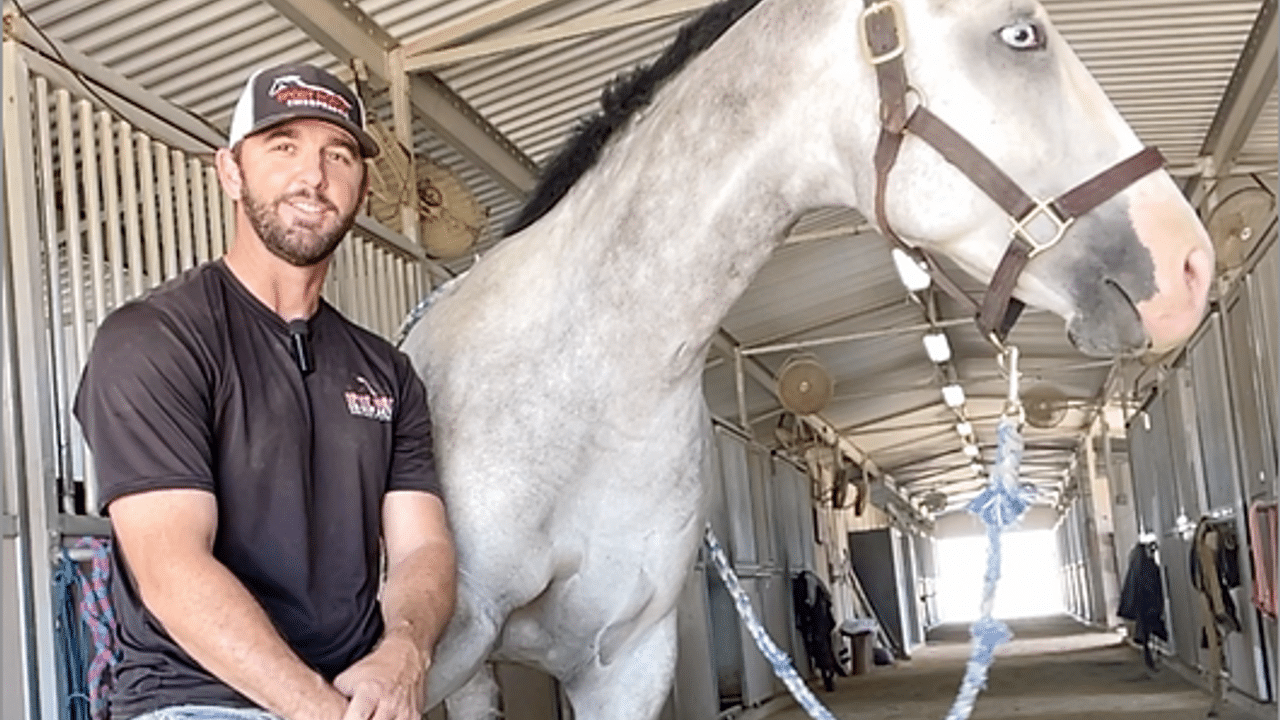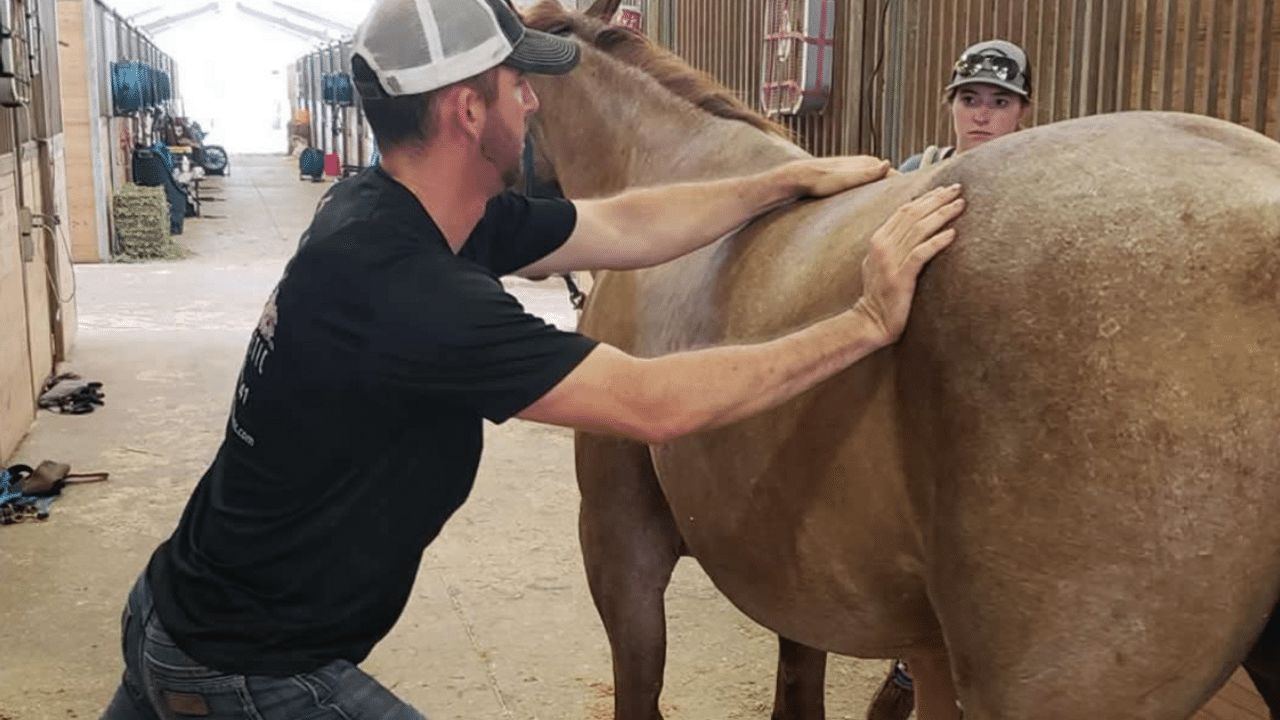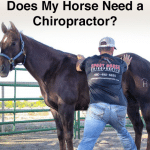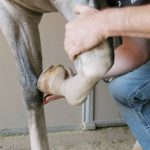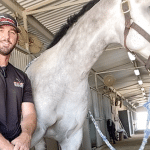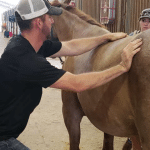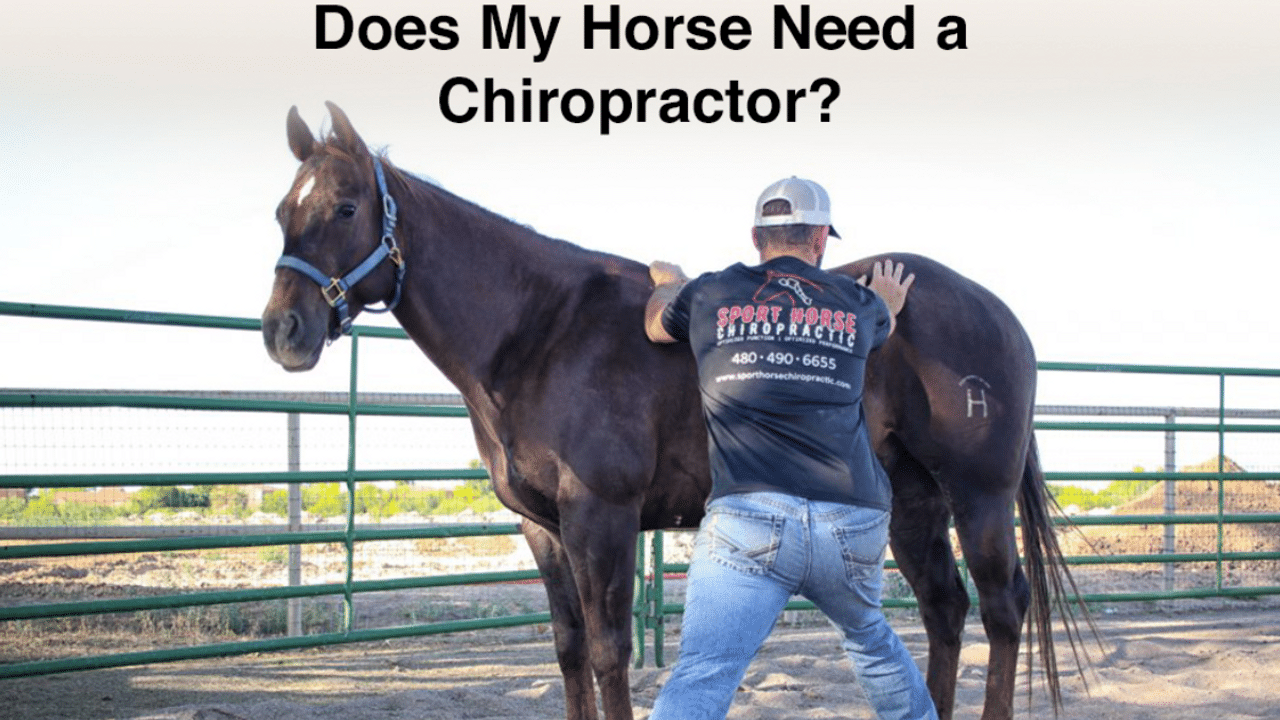
Does My Horse Need a Chiropractor?

Chiropractic Care provides a number of benefits for horses.
Regardless of the discipline in which the horse participates, from trail riding or competitive roping, to dressage, barrel racing, and more, chiropractic care benefits them all. Owners, riders, and trainers, are constantly asking their horses to do incredible, yet unnatural things. Whether that is barrel racing, cutting, reining, team roping, cross country, dressage or jumping, our animals always try to please us by performing at their best.
Most horse owners that I have come across take amazing care of their animals. However, most care that is routinely provided for horses is reactionary. Meaning that we don’t usually provide care for the horse until something starts to show up. That could be something as slight as a grade-1 lameness, a more serious problem such as colic or laminitis, or the rider may notice that all of a sudden the horse doesn’t want to take a certain lead or lope in a particular direction. Whatever prompts the decision to contact a healthcare provider, it is normally something that happens once a problem has been identified.
Many times a person contacts me, it is because they want help with a particular issue, symptom, or ailment. Not realizing that chiropractic care can be something they can utilize for their animals on a regular basis, it is no wonder why people usually ask for symptom-focused care. So with this in mind, I want to address a few things regarding equine chiropractic care, that might be new to most horse owners.
A common question I receive is, “Does my horse need a chiropractor?” So what are some things to look for to indicate that your horse would need a chiropractor?
- Has your horse’s behavior or performance changed recently?
- Does unusual or fluctuating lameness exist?
- Does the rider have difficulty sitting straight on the horse?
- Has the rider or trainer noticed changes in the various gaits?
- Does the horse drag its feet or are the shoes worn down on one side?
- Are lead changes suddenly an issue?
You may have noticed that all of the above questions result in a reactionary care. Once you feel or notice an issue, then you look for a solution. But there is another way you can determine if your horse needs chiropractic care. Ask different questions, such as:
- Do I ask my horse to go all-out, push him/herself in competition?
- Does my horse carry a heavy load (be honest…)?
- Does my horse take frequent rides on trailers?
- Does my horse spend most of his/her time out in a natural environment, such as a pasture?
- Have you reached a training plateau that you just cannot push through?
- Was my horse once a lot faster or quicker and has slowed down (when age related changes are not suspected) and yet is sound?
As you can see, these are not symptom-based questions; they are lifestyle centered. The rigorous routines of competition and travel that performance horses are subjected to, need to be accompanied by appropriate levels of maintenance care! This is what is so often overlooked in the equine world. Human performance athletes are given access to a multitude of maintenance care options. These include but are not limited to, chiropractic care, massage, hyperbaric chamber, ice water therapy, e-stim, acupuncture, etc. These options are now becoming more and more available to animals as well! Chiropractic care should be at the center of any maintenance care plan. Why? Easy! Structure equals function! If the structure is incorrect, the function is going to be incorrect as well. Have you ever thought about what the function of muscle tissue is?
At the basic level, and we are speaking of skeletal muscle here, it is to move bone. That’s it. If the bones that make up a joint, are not in their correct position, can the muscles move the bones properly? The answer is no. So if a horse has a joint out of position, and we give that horse a massage, or acupuncture, or supplements, will any of it work? No, the joint position must be corrected. The purpose of chiropractic care is to correct the joint position so that the muscles can do their job. Once the joint position is correct, then you can treat any remaining issues, such as muscle soreness, tightness etc., with supportive therapies like massage, acupuncture, supplementation etc.
So what this all boils down to is this. Having your horse checked and adjusted by a chiropractor on a regular basis, will ensure proper joint position. Proper joint position ensures proper joint motion. (Remember, structure = function) Proper joint motion results in a horse performing at their optimum level! This reduces the presence of compensatory movements which in-turn decreases the likelihood of pain and injury! This is the purpose of chiropractic care! And what horse wouldn’t benefit from that?
If your horse is not moving properly, or you notice performance issues, chiropractic care can help!
I hope that you have enjoyed this post! If you have any questions about this information, or to schedule a chiropractic adjustment for your horse(s), please contact us at 480–490–6655, or email us at sporthorsechiro@gmail.com. You can also find us on TikTok, Facebook, Instagram, and on Twitter.
Thank you for reading!
